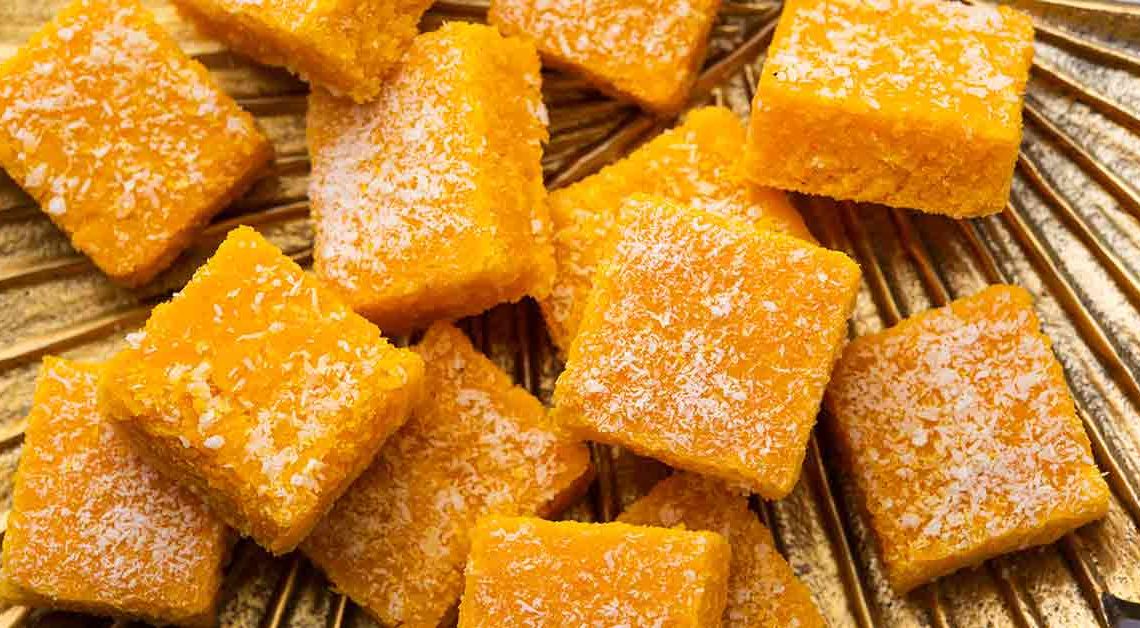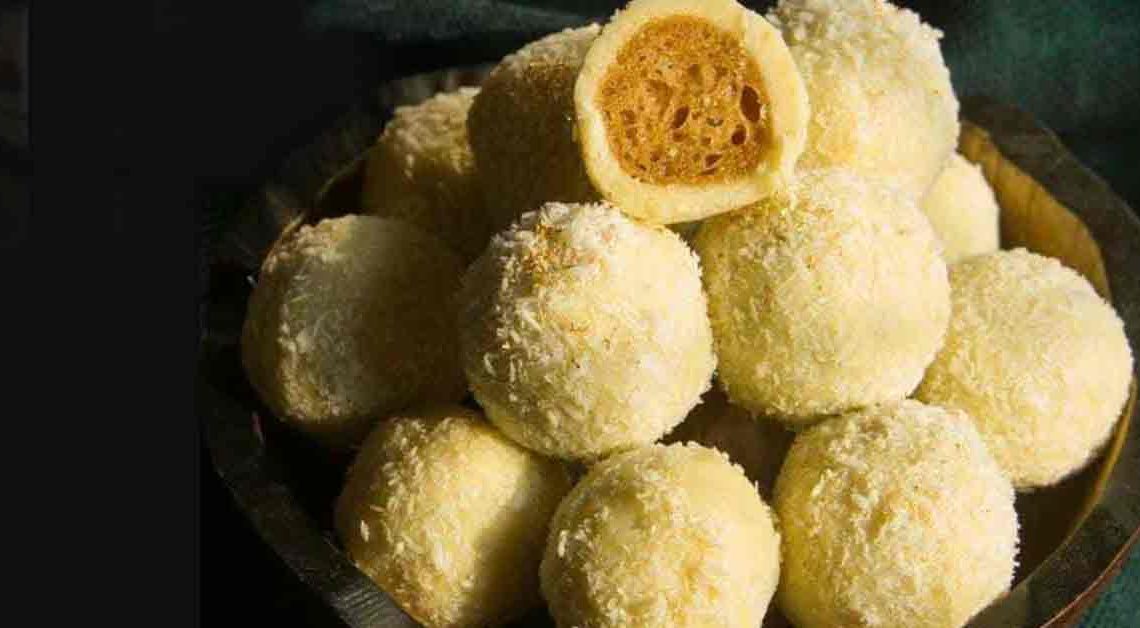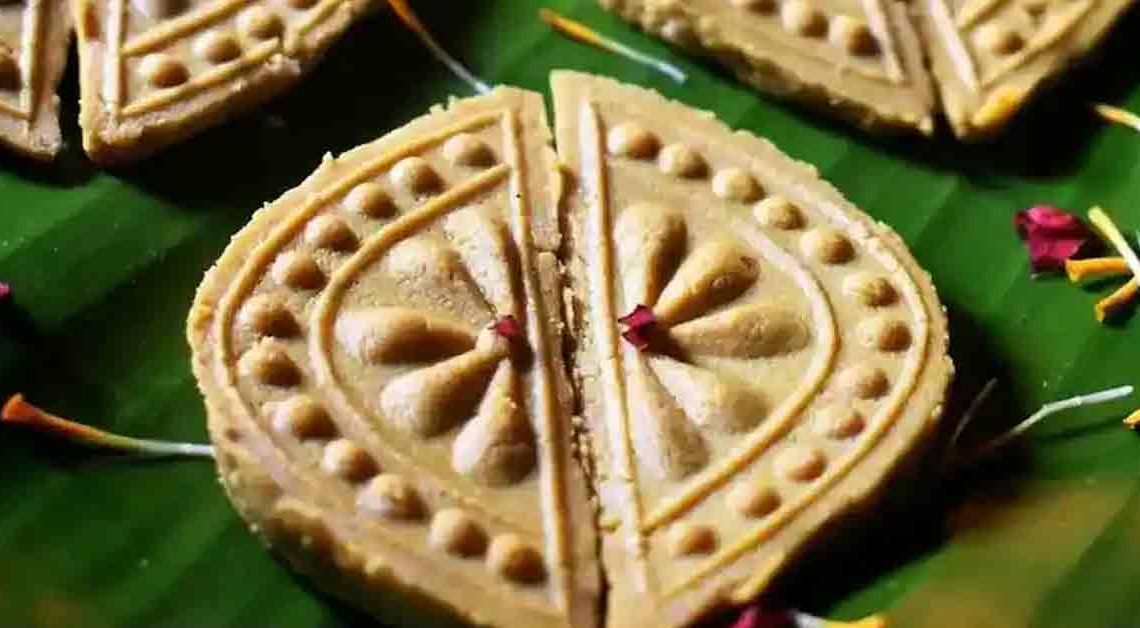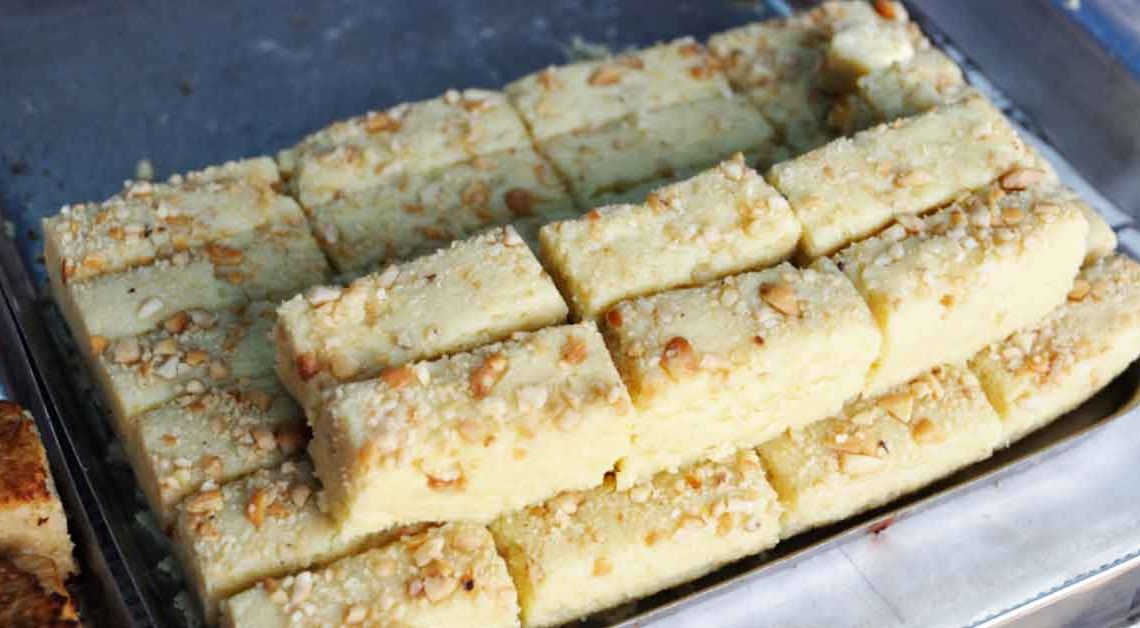Fusion Delight: Mango Coconut Barfi

Embark on a culinary voyage through the lush orchards of flavor with our Mango Coconut Barfi, a confection that marries the tropical allure of ripe mangoes with the rich, creamy essence of coconut. This sweet treat, a symphony of vibrant hues and indulgent textures, promises to whisk your senses away to an exotic paradise with every tender bite.
Our Mango Coconut Barfi is not just a dessert; it’s a celebration of contrasts. The natural tanginess of mangoes dances in perfect harmony with the velvety smoothness of coconut, creating a flavor profile that is both bold and comforting. The golden glow of mangoes, with their seductive aroma, is a loving embrace to the subtle, toasty whispers of coconut, each element elevating the other.
Welcome to the sweet side of life – Mithainama!, where every morsel tells a story of tradition, innovation, and the universal language of exquisite taste.
Origin of Mango Coconut Barfi
Mango Coconut Barfi, a luscious and tropical twist on the classic Indian sweet, finds its roots in the rich tapestry of Indian confectionery traditions. Barfi itself is a dense milk-based sweet from the Indian subcontinent, and its name is derived from the Persian word ‘barf’ which means snow, reflecting the sweet’s typical white color and flaky texture.
The mango, known in India as the ‘king of fruits’, is widely celebrated and enjoyed in myriad forms, from raw green mangoes used in chutneys and pickles to the ripe ones savored as juices, desserts, or eaten fresh. Its incorporation into barfi likely arose from a desire to infuse the sweet with the beloved flavor of fresh mangoes, which are abundant in India, especially during the summer months.
Coconut, on the other hand, is a staple in coastal Indian cuisine, especially in the southern states where it’s used extensively in both savory and sweet dishes. The combination of mango and coconut in barfi is a relatively modern innovation that showcases the versatility of Indian sweets and the willingness of its cooks to experiment with flavors.
History of Mango Coconut Barfi
The history of Mango Coconut Barfi, while not documented explicitly like other historical dishes, is intertwined with the evolution of Indian sweets and the cultural influences that shaped them.
Barfi itself has a long-standing history in Indian cuisine, dating back centuries. The basic form of barfi, which is made from condensed milk and sugar, has its origins in Mughal culinary practices. The Mughals were known to have a penchant for rich and elaborate desserts, and their royal kitchens played a significant role in the development and refinement of many Indian sweets.
With the advent of Portuguese and other European influences in India, particularly in the area of confectionery, Indian sweets evolved. The Portuguese introduced techniques like the use of coconut milk and the process of condensing milk, which were readily incorporated into the Indian culinary repertoire.
As for mangoes, they have been cultivated in the Indian subcontinent for over 4,000 years. Mangoes feature prominently in Indian literature and folklore and have been a part of traditional Indian cuisine for centuries. They are not just consumed as a fruit but also incorporated into a wide array of dishes.
Cultural Significance
Mango Coconut Barfi, while a newer addition to the pantheon of Indian sweets, carries cultural significance that reflects India’s agricultural richness, regional diversity, and the ingenuity of its cuisine.
Agricultural Bounty: India is the world’s largest producer of mangoes, and the fruit is deeply embedded in the country’s culture. The incorporation of mango into barfi celebrates this culturally revered fruit and showcases India’s agricultural pride.
Regional Diversity: Coconut is predominantly harvested in the coastal regions of India, like Kerala, Tamil Nadu, and Karnataka, where it is a vital part of the local diet. By blending mango and coconut, this dessert unifies diverse regional flavors, highlighting the cultural melting pot that is India.
Innovation in Tradition: Indian cuisine is known for its willingness to adapt and innovate while maintaining traditional roots. It represents this aspect of Indian culinary culture, where new ingredients are seamlessly woven into time-honored recipes to create something unique yet familiar.
Where is Mango Coconut Barfi Famous?
Mango Coconut Barfi is particularly popular in regions of India where both mangoes and coconuts are abundant. Here’s where it enjoys popularity:
Western India: In states like Maharashtra and Gujarat, where mangoes like the Alphonso are famed for their sweetness and richness, Mango Coconut Barfi is a favored treat, especially during the mango season.
Southern India: With a bounty of coconut groves, states such as Kerala, Tamil Nadu, and Karnataka are known for their coconut-based desserts. The combination of mangoes, which are also widely cultivated in the south, makes a natural fit for the regional palate.
Coastal Regions: The coastal belt of India, which includes parts of the eastern states like West Bengal and Orissa, also enjoys a variety of coconut and mango sweets, due to the easy availability of these fruits.
Interesting Facts and Trivia
Mango Coconut Barfi, like many dishes steeped in cultural heritage, comes with its share of interesting facts and trivia:
- India has over 1,000 varieties of mangoes, and each can impart a different flavor and texture to the barfi. Alphonso mangoes, known for their rich sweetness, are often considered the best for making this sweet.
- Mangoes have been cultivated in the Indian subcontinent for over 4,000 years and are often referred to in ancient Sanskrit writings, underlining the deep historical connections between the fruit and Indian culture.
- Coconuts are considered auspicious in Hindu culture and are used in various rituals and ceremonies. The use of coconut in barfi can be seen as adding a layer of cultural significance to the sweet.
- Both mangoes and coconuts are high in nutrients. Mangoes are rich in vitamins A and C, while coconuts provide healthy fats and fiber, making a dessert with some nutritional benefits.
- The technique of condensing milk, which is a key process in making barfi, was popularized during the British Raj when milk was condensed for preservation purposes. This technique became integral to many Indian sweet dishes.
Did You Know?
Mango Coconut Barfi isn’t just a feast for your taste buds; it offers a bouquet of benefits that make indulging in this sweet treat a little more satisfying:
- Mangoes are rich in Vitamins A and C, which are essential for a healthy immune system and good vision. Enjoying a piece of Mango Coconut Barfi can contribute to your daily vitamin intake.
- Coconuts are high in dietary fiber, which aids in digestion and may help maintain healthy blood sugar levels. The coconut in barfi can help you feel full and satisfied while supporting your digestive health.
- The natural sugars in mangoes provide a quick energy boost, making a small piece of this barfi a good pick-me-up during a slow afternoon.
- Mangoes contain antioxidants such as mangiferin, which have been studied for their potential to combat oxidative stress, contributing to overall wellness.
- Coconut has medium-chain triglycerides (MCTs), a type of healthy fat that can be more easily metabolized by the body and may support heart health.







